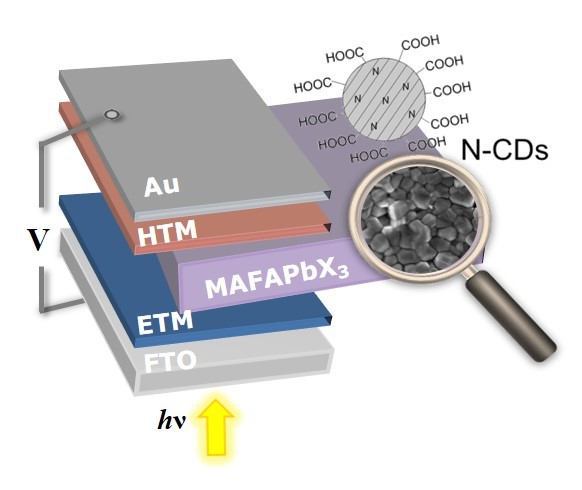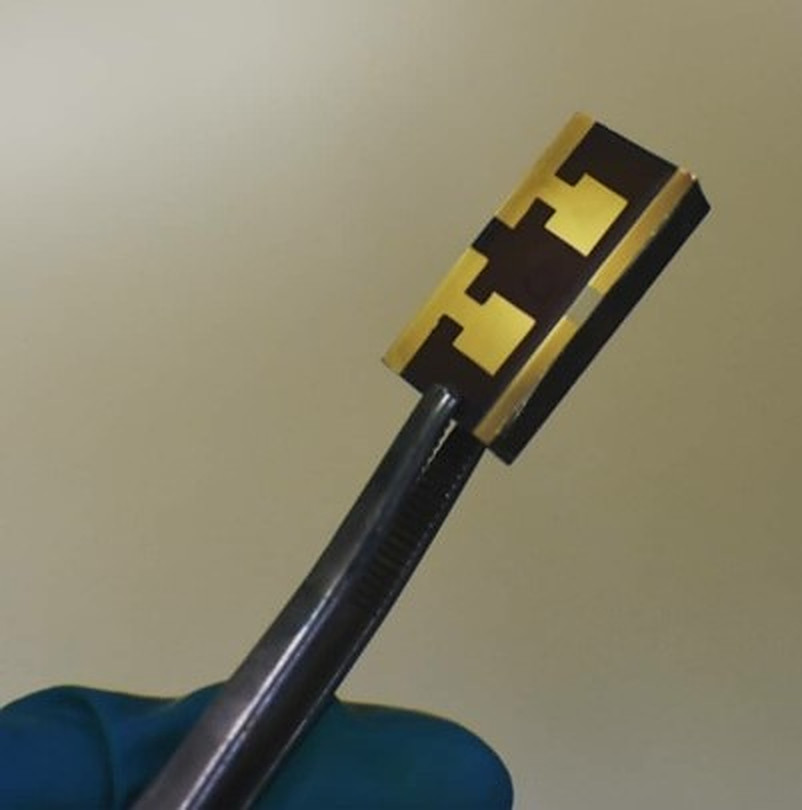A Spanish-Italian research group has improved the stability and power conversion efficiency of a solar cell based on methylammonium (MA)-formamidinium (FA) lead halide perovskite by using graphitic and amorphous nitrogen-doped carbon dots (g-N-CDs) as an additive.
“The cell was conceived exclusively to study the influence of CDs additives over the efficiency and stability in photovoltaic devices based on perovskite,” researcher Juan Luis Delgado told pv magazine. “The stability of the g-N-CDs-containing cells was improved. The long-term evaluation of the performances of the cells showed improvement of the power conversion efficiency of the g-N-CDs-containing cells over time, up to 109% of the initial efficiency after 40 days while the reference performance without CDs dropped to 86%.”
The scientists used 3 mm CDs rich in carboxylic acids on their surface, which enable ionic and hydrogen-bonding stabilizing interactions with formamidinium (FA). For their development, they used a synthetic procedure consisting of a thermal treatment in a muffle furnace of L-aspartic acid in the air at 320 C for 100 hours. The g-N-CDs were then blended with the perovskite precursor solution at two different concentration levels and both were deposited by spin coating on the perovskite layer.

The experimental solar cell was built with a substrate made of fluorine-doped tin oxide (FTO), a compact titanium dioxide (TiO2) layer, a mesoporous TiO2 layer, a film made of perovskite with a composition of MA0.17FA0.83Pb(I0.83Br0.17)3:N-CDs, a hole transporting material (HTM), and a gold (Au) metal contact.
The scientists used proton nuclear magnetic resonance to analyze the chemical interactions between the perovskite layer and compare them to those of a reference cell without CDs. They used electron microscopy to study the blends of the g-N-CDs and the perovskite absorber. They conducted long-term stability tests.
Popular content
“After the first 10 days, both g-N-CDs-containing devices showed improvement in the performances, while the performances of the reference and a-N-CD-containing cells dropped,” the scientists explained. “After 20 days the performances of the reference and a-N-CD-containing cells were decreasing slowly, while those of the g-N-CDs-containing cells kept increasing.”
According to their measurements, the cell with the lowest concentration of g-N-CDs saw its efficiency increase up to 109%, while that of the reference cell without carbon dots decreased to 86%.
“The observed power conversion efficienc enhancement is mainly due to a progressive increase of open-circuit voltage of the solar cells containing g-N-CDs,” they sai9d. ” The less strong interactions between a-N-CDs and PVSK might be the reason why the devices containing these additives are less stabilized than the g-N-CD-containing devices.”
The researchers introduced the cell in “Efficient and Stable Perovskite Solar Cells based on Nitrogen-Doped Carbon Nanodots,” which was recently published in Energy Technology. The team includes academics from the University of the Basque Country UPV/EHU and the Basque Research and Technology Alliance (BRTA) in Spain, as well as the University of Trieste in Italy.
This content is protected by copyright and may not be reused. If you want to cooperate with us and would like to reuse some of our content, please contact: editors@pv-magazine.com.



But what was the efficiency of the cell?